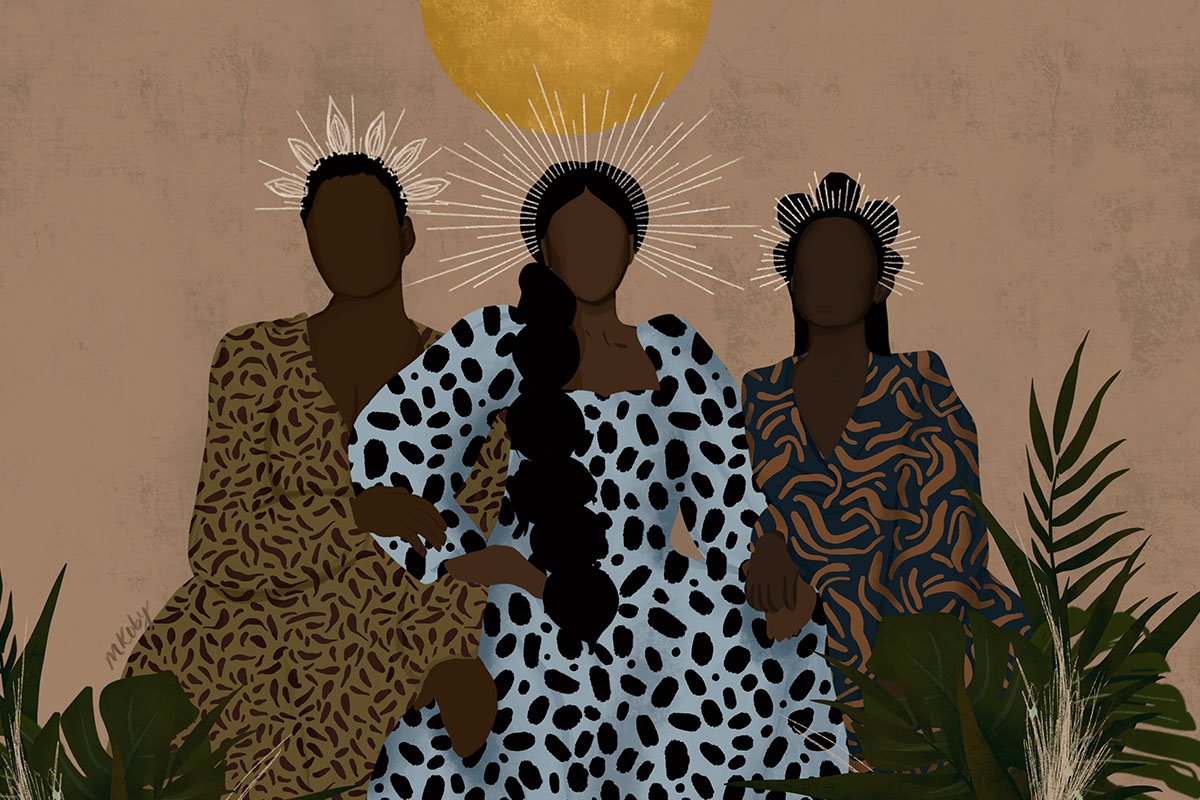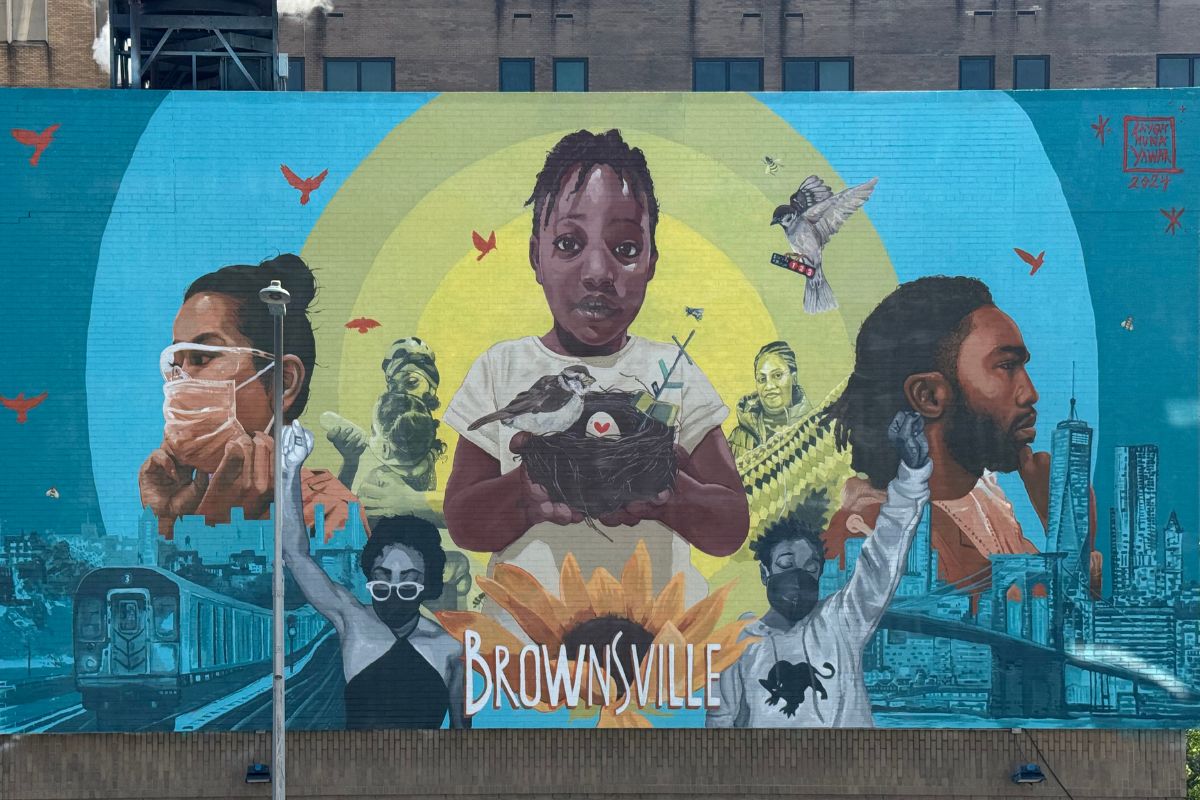
As the nonprofit sector responds to a fieldwide movement for racial justice, it is important to stop and consider the strategies or approaches we take for granted.
I have written quite a bit for NPQ about the domination practices of the elite (here, here, and here). The other side of this is the liberatory practices of those positioned as subordinate in systems. Many have spoken or written about the centrality of voice in the process of liberation, or transformation, and the active, ongoing silencing of the subordinated experience. Perhaps no one has done so better than Black lesbian poet and theorist Audre Lorde, who, upon facing a life-threatening illness, famously concluded, “My silences had not protected me.”
Knowing one’s self is intimately tied to the ability to speak, to language one’s reality. But for those positioned as subordinate in a system, this is precisely what is subverted. Lorde writes, “And of course I am afraid, because the transformation of silence into language and action is an act of self-revelation, and that always seems fraught with danger.” Becoming oneself, being authentic, when one is positioned as subordinate in a system is to challenge it at its core.
In her now-classic essay “Can the Subaltern Speak?,” post-colonial theorist Gayatri Spivak speaks of European domination as a project of “Europe as Subject”—of “asymmetrical obliteration,” an attempt by Europeans to claim subjectivity for themselves. She describes it as a concealed subject that “pretends it has ‘no geo-political determinations.’” She elaborates,
This is not to describe “the way things really were” or to privilege the narrative of history as imperialism as the best version of history. It is, rather, to offer an account of how an explanation and narrative of reality was established as the normative one.
The field of epistemic violence understands this capture of knowledge as essential to the capture of power, or the idea that violent social conditions are based on what is considered knowledge. Underneath this capture of knowledge is subjugated knowledge, which Spivak defines, by quoting French philosopher Michel Foucault, as “a whole set of knowledges that have been disqualified as inadequate…located low down on the hierarchy, beneath the required level of cognition or scientificity.”
James C. Scott is a political science and anthropology scholar at Yale who has focused on the study of those without political voice, and his work has led him to formulate new theories and turn others on their head. One important contribution he makes is to challenge the notion of internalized oppression by zeroing in on the dynamics of voice under domination.
In Domination and the Arts of Resistance, Scott argues that we cannot understand people positioned as subordinate by their speech and actions. Because of the capture of narrative and subjectivity by the dominant, what the subordinate really desires is often hidden. Instead, Scott distinguishes between public and hidden transcripts. He defines public transcripts as the “open interaction between subordinates and those who dominate.” (2) Here, language is used to dominate rather than facilitate understanding. Scott writes, “Dominated discourse is, of necessity, distorted because power relations encourage ‘strategic’ forms of manipulation that undermine genuine understanding.” (176) At the root, dominant systems seek to suppress alternatives to it.
Scott identifies four power narratives. The first is the public transcript—also known as official knowledge, constituted knowledge, knowledge that supports current power relations and relies on force to keep its hold. He explains that dominated discourse is based on “the self-portrait of dominant elites as they would have themselves seen…designed to be impressive, to affirm and naturalize the power of dominant elites, and to conceal or euthanize the dirty laundry of their rule.” (18) It is found in the most patrolled social spaces, the commons to which the dominant feel entitled. In these spaces, the subordinate tends to secure any concessions by appealing to the flattering self-image of elites. For example, enslaved people may appeal to the paternalistic claims of slave owners to attain humane treatment, or a person of color in a white nonprofit may invoke organizational mission to drive inclusive change.
The second power narrative is the hidden transcript—the counter-narrative that is created when subordinates are able to meet, share experiences, develop analysis, and consider responses. They are conversations among subordinates in a nonprofit where there exists a critique of how well the organization performs, how effective the leader is, or how aligned the organization is with its mission. Hidden transcripts are not just speech acts, but also practices, such as evasion of financial obligations, not giving one’s best, actively sabotaging. The space between the public and hidden transcript is marked by struggle. Scott considers hidden transcripts a “condition of political resistance.” (191)
The third, the disguised transcript, lies between the first two—it is where the hidden transcript peeks its head into the public one, often in disguise, as a double meaning, or in an anonymous manner. Examples are rumors, jokes, codes, and euphemisms. It can also be knowing looks among subordinates that signal the awareness of a power transcript or a shared hidden transcript. Disguised transcript is symbolic liberatory communication among subordinates. While it does not directly challenge the public transcript, it does lessen its hold on the experiences of the subordinate.
The final and most explosive is the rupture between the hidden transcript and the public one—when both the message and the messenger are openly disclosed, that is, no longer disguised. (139) This is a clear challenge to the dominant. It is a taking off of the mask. For the dominant it often feels like an uprising that came out of nowhere and is interpreted as a rebellion. For the subordinate, it is risky, long overdue, and liberating, at least in the sense of having one’s say, of being authentic, which is liberating in and of itself. When aspects of the hidden transcript break through the barrier to become part of the public transcript, it is so explosive that Scott calls it a “symbolic rout.” (204) He explains: “The open refusal to comply with a hegemonic performance is, then, a particularly dangerous form of insubordination.” (205) Though the dominant seeks to make the public transcript appear inevitable, the subordinate understands that it is constructed.
Those who are dominant have options for responding to a public challenge. They may ignore it or frame the challenger as the perpetrator, the disturbed party. But the forces seem to be with the challenger. Scott stresses, “The most important thing to understand about this moment is the enormous impact it typically has on the person (or persons) who makes the declaration and, often, on the audience witnessing it.” (206) The successful public articulation of a challenge, counter narrative, or speaking truth to power is so powerful that it changes the actor(s). Scott observes, “the open declaration of the hidden transcript in the teeth of power is typically experienced, both by the speaker and by those who share his or her condition, as a moment in which truth is finally spoken in the place of equivocation and lies.” (208) He defines this experience as a moment of personal authentication, a recapturing of dignity, of the deepest truth—that no one can legitimately rule another. While the dominant will likely seek to recapture power, the subordinate has changed.
Power Narratives |
|
| Type | Practice |
| Public Transcript | Appeal to the self-image of the dominant |
| Hidden Transcript | Analyze power narrative and construct a more liberatory counter narrative (and practices) |
| Disguised Transcript | Symbolic liberatory communication between subordinates that is hidden from the dominant and loosens the hold of the public transcript |
| The Rupture | The subordinate refuses to comply any longer with the public transcript |
Sign up for our free newsletters
Subscribe to NPQ's newsletters to have our top stories delivered directly to your inbox.
By signing up, you agree to our privacy policy and terms of use, and to receive messages from NPQ and our partners.
Thus, the subordinate do not always buy into the public transcript (often interpreted as internalized oppression), but the dominant is usually able to command performances that defer to it. However, the dominant must continuously devise ways to compel subordinates to do so. Domination, then, is activity that spans various types of violence and threat (physical, social, psychological, emotional), force (economic, legal, political), and claims to knowledge. It is more precise to speak of “those who seek to dominate,” than of a static dominant, as the dominant have to continuously secure their position.
The dominant aim to police the subordinate as much as possible in order to prevent liberatory sensemaking. They attempt to forbid gatherings of subordinates, or to atomize them, structuring the organization to elicit one-on-one relationships over group cohesion.
The dominant and the subordinate are caught in a disingenuous dance of surveillance and disguise. But, Scott notes, “the necessity of ‘acting a mask’ in the presence of power produces, almost by the strain engendered by its inauthenticity, a countervailing pressure that cannot be contained indefinitely.” (9)
Thus, language and narrative, or voice, is the foundation for both domination and resistance. Scott asserts that in the case of domination, “conformity is created and maintained by shared linguistic practices.” (130, italics mine) He calls the struggle to develop counter narratives “voice under domination.” It is no surprise then that they are overcome with verbal agility. (136,137)
Scott points to the Black game “the Dozens,” for example, as one that teaches verbal agility, a critical skill for Black people. (Though we could easily substitute hip hop or Black Twitter.) He explains that it serves as a “mechanism for teaching and sharpening the ability to control emotions and anger; an ability which was often necessary for survival.” (137) Scott continues, “The training in verbal facility implied by rituals of this kind enables vulnerable groups not only to control their anger but to conduct what amounts to veiled discourse of dignity and self-assertion within the public script.” (137) He observes, “The self-control and indirection required of the powerless thus contrast sharply with the less inhibited directness of the powerful.” (136)
Liberatory sensemaking among subordinates happens in private social spaces. Scott identifies these private social spaces as the first critical factor in the ability to resist domination and sees them as domains of power in their own right. In these spaces, those positioned as subordinate are able to play with the negation of the dominant. Scott writes: “the negation of a dominant…ideology requires an offstage subculture in which the negation can be formed and articulated.” (118)
Scott identifies active human agents as the other key factor in liberation. He writes, “The elaboration of hidden transcripts depends not only on the creation of relatively unmonitored physical locations and free time but also on active human agents who create and disseminate them.” (123) When subordinates do manage to create space for liberatory sensemaking, they seek to eliminate status distinctions, both in their languaging of their experience and relationships to each other. In these out-of-the-ordinary spaces, subordinates turn the world upside down, and imagine and practice more egalitarian alternatives.
Thus, Scott argues, “If we are to understand the process by which resistance is developed and codified, the analysis of the creation of offstage social spaces becomes a vital task.” (118)
At NPQ, we hear consistently from readers of color, both young and older, in predominantly white organizations that they desire a space outside their organizations for liberatory thinking and practice with others. We also hear from readers of color in multicultural organizations seeking guidance on how design more liberatory organizations.
To return to the opening statement about our sector’s need to reconsider our approaches to racial justice—given the general lack of progress on racial justice in the sector, the quality of experiences for people of color in the sector, and the glaring lack of leadership of our sector in addressing the resurgence of explicit racial persecution in the US—it appears that we are at a critical stage of development in our sector where we need to organize at the level of ideas and forms for social evolution.
Regarding ideas, those committed to racial justice need to recognize just how political narratives are, including, if not especially, organizational narratives, the stories we tell about our nonprofits. While on some level we get this, the sector has yet to shift practices to account for it. Even explicit racial justice initiatives, especially those led by funders, do not do so. They ask for key stakeholders to participate in processes, and it is often incidental if this includes people of color. There is often more attention paid to whether a board representative is participating. When people of color do participate, they often sit uncomfortably through very public processes in which they play a symbolic role much like those described by Scott. These surreal experiences are full of tension as everyone acts out a public script, thinking it will create systemic change. There is no talk about the power shifting and trust building needed for this level of change.
Underlying much of this is the lack of attention paid to forms. Most nonprofits are hierarchical or centralized organizations, in which a few have monopolized narrative-creating and decision-making power. In initiatives, it’s funders. In organizations, it’s executive leadership and boards. Overlap lack of attention to the way that voice is muffled in racist cultures with our predilection for hierarchy, and it is no surprise that we are where we are.
In Assembly, Michael Hardt and Antonio Negri argue that the core challenge to leadership today is one of organization. (14) The role of leaders now is not only to help create new (more horizontal) subjectivities, but to figure out two key leadership functions: decision-making and assembly, or how people come together. (xiv) They’ve identified the two primary tasks as “how to construct organizations without hierarchy, and how to create institutions without centralization.” (14)
Power is the ability to order experience, and order works through forms.
We will not make a dent in racial (or other kinds of) justice until we are able to imagine and develop more liberatory organizational forms. These forms must, above all, pay attention to voice.











